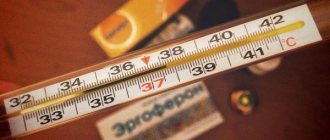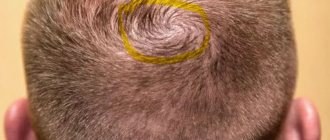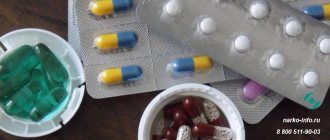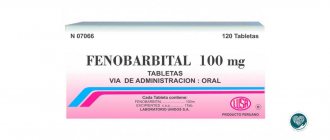Content:
- Effect of Phenobarbital on the body
- Effect on humans of Phenobarbital used in high doses
- When narcotic medicine is strictly prohibited
- How addiction develops
- How to understand that a person is “sitting” on Phenobarbital
- What does phenobarbital addiction lead to?
- How to deal with addiction
Phenobarbital drug addicts use it for a reason.
It quickly causes physical dependence if used uncontrollably. The drug belongs to the pharmacotherapeutic group “Anticonvulsants” and is a representative of barbiturates. Prescribed to patients with various forms of epilepsy, with the exception of absence seizures. Also, sometimes narcologists prescribe it to alcoholics suffering from painful withdrawal symptoms. Shows pronounced hypnotic and sedative properties.
Phenobarbital as a drug
Almost all drugs that affect the human central nervous system are drugs. Their irrational or excessive use will certainly lead to mental and later physical dependence.
Dependence occurs when the permissible dose of the drug is exceeded, if the previous dose no longer has the desired effect. Addiction and dependence on Phenobarbital develops within 2 or 3 weeks of its constant use. The first stage of dependence on a drug can be considered the onset of addiction to the drug. A person can become addicted to taking pills.
“Phenobarbital” without even realizing it. In this case, the body reacts in a non-standard way: the person sleeps poorly, and his sleep is a short-term nightmare; the human psyche becomes extremely labile, that is, a small exposure to a weak pathogen will certainly provoke a violent reaction. This reaction is caused not only by direct contact with a person by a stimulating factor, but by a fairly loud knock outside the window or the sound of a drill in a neighboring apartment.
If Phenobarbital is used as a drug, then consumers usually do not think about its side effects on the body. For drug addicts, only the narcotic effect of the drug is important. To drug addicts, the world and the people around it are seen differently, and their own movements are felt unsightly.
Drug intoxication with Phenobarbital is quite similar to alcohol intoxication. A person under the influence of Phenobarbital feels like a complete master of the situation. This is the difference between a drug high and an alcoholic bull high.
Pheobarbital accumulates in the liver and remains there for a long time. Because of this, it often happens that an excessive dose, which “catches”, leads to a complete stop of breathing.
Effect of Phenobarbital on the body
The drug has an effect on the cerebral cortex and inhibits the functioning of the thalamus. Due to this, a pronounced hypnotic and sedative effect occurs. Its anticonvulsant activity is achieved by reducing neuronal excitability provoked by psychotropics or an existing mental disorder.
The sleep that occurs after using the drug Phenobarbital is very different from normal physiological sleep. Thus, the duration of the REM sleep phase is reduced, as are the third and fourth stages of slow sleep. The structure of human night rest is undergoing dramatic changes. The hypnotic effect appears within an hour after taking the medicine and lasts up to 8-12 hours. But after two weeks of regular use of Phenobarbital, its hypnotic effect becomes weaker.
If you combine the medication with antispasmodics, you will be able to quickly achieve positive dynamics in neurovegetative pathologies. The drug can reduce the activity of metabolic reactions and inhibit the main centers of thermoregulation. Because of this, the drug addict’s body temperature drops significantly.
Phenobarbital
Interestingly, this substance is officially recommended by WHO for the treatment of epileptic seizures. Phenobarbital is on the list of restricted drugs, but at the same time it is on the list of vital medications. For example, the common drug Corvalol, so beloved by Russian grandmothers, also contains phenobarbital.
HOW TO MOTIVATE A DEPENDENT FOR TREATMENT
What is phenobarbital
This is a drug belonging to the group of barbiturates. Has a powerful effect on the nervous system. Phenobarbital was first synthesized at the beginning of the 20th century by a German chemist. It was sold in pharmacies under the name “Luminal” and was recommended as a sleeping pill and sedative.
The production of such a medicine was a real breakthrough, because now doctors had a way to calm violent, mentally ill people. Many used it uncontrollably as a sedative. However, after some time, an unpleasant fact was revealed - phenobarbital is highly addictive and has a detrimental effect on overall health.
Photo of the drug: what it looks like
Figure 1 Phenobarbital tablets
Figure 2 Chemical formula and liquid form of the drug for injection
Duration of action of phenobarbital
The hypnotic effect caused by the drug reaches its maximum within an hour after administration. In this case, sleep lasts about 8-10 hours, and it differs significantly from natural night rest. If we are talking about exceeding the dosage, the effect may occur faster, and the risk of overdose and severe intoxication of the body increases. By the way, many people mistakenly consider Phenazepam and Phenobarbital to be similar drugs. However, this is not so - they have different active ingredients and different mechanisms of action.
Harm of phenobarbital
Why is phenobarbital dangerous? First of all, it disrupts the normal functioning of the nervous system. If you take the drug regularly, instead of a sedative effect, you can get insomnia, hallucinations and mental disorders. There are several other side effects:
- Liver destruction.
- The appearance of blisters and ulcers on the skin.
- Blood clots occur and the blood becomes thicker.
- Constant dizziness.
- Loss of coordination in space.
It is not necessary to consume phenobarbital in large quantities to experience these side effects. Long-term and regular use may well cause such a reaction in the body.
Effect on humans of Phenobarbital used in high doses
An overdose of the drug causes serious harm to health. There are disruptions in the transmission of nerve impulses, and consciousness changes. The most dangerous complication is destruction and damage to the main nerve canals. With this pathology, symptoms such as:
- psychomotor excitability;
- inability to remain calm or sit still for even a short time;
- sense of anxiety.
If a person takes the drug in high doses for a long time, his nerve channels completely atrophy. But nerve impulses continue to look for a way out, so they pass along alternative courses of movement. As a result, the addict:
- involuntary contractions of the facial muscles occur (facial expressions look very strange);
- the tongue falls out;
- there is copious secretion of saliva;
- tremor of the fingers is observed.
The effect of Phenobarbital on the human body is very specific. In many drug addicts, the respiratory center is depressed. They begin to inhale less air. There is a feeling of lack of oxygen. Choking may develop.
Drug poisoning can be acute or chronic. A specific toxic dose for humans has not been established. It depends on age, gender, body weight, and health status. If you drink one gram of medication at a time, symptoms of acute intoxication will most likely appear.
The lethal dose of Phenobarbital is from two to ten grams. An addict develops symptoms reminiscent of alcohol poisoning:
- vomit;
- nausea;
- dizziness;
- stomach ache;
- severe headaches;
- problems with orientation in space;
- surges in blood pressure.
Signs of a neurological disorder also make themselves felt. Therefore, if a dose of Phenobarbital exceeding one gram is taken, you should receive qualified medical care as soon as possible.
Substance-powder Phenobarbital (Phenobarbitalum)
Instructions for medical use of the drug
Description of pharmacological action
Belongs to the group of barbiturates. It interacts with the “barbiturate” portion of the benzodiazepine-GABA receptor complex, thereby increasing the sensitivity of GABA receptors to GABA, leading to the opening of neuronal channels for chlorine ions, which leads to an increase in their entry into the cell. Reduces the excitability of neurons in the epileptogenic focus and the propagation of nerve impulses. Shows antagonism towards a number of excitatory mediators (glutamate and others). Suppresses the sensory zones of the cerebral cortex, reduces motor activity, and inhibits cerebral functions, including the respiratory center. Does not have a significant effect on the cardiovascular system. Reduces the tone of the smooth muscles of the gastrointestinal tract. In small doses, it somewhat reduces the intensity of metabolic processes, which may manifest itself as slight hypothermia. It has anticonvulsant, sedative (in small doses), hypnotic, antihyperbilirubinemic, muscle relaxant and antispasmodic effects. Being an inducer of microsomal oxidation enzymes in the liver, it increases its detoxification function and reduces the concentration of bilirubin in the blood serum.
Indications for use
- epilepsy (all types of seizures except absences), seizures of non-epileptic origin; - chorea; - spastic paralysis; - sleep disturbances, agitation, anxiety, fear.
Release form
substance-powder; paper bag (bag) 15 kg; substance-powder; polyethylene double-ball bag (bag) 25 kg, fiber drum 1; substance-powder; double ball polyethylene bag 25 kg, drum 1; substance-powder; paper bag (bag) 5 kg; substance-powder; paper bag (bag) 10 kg; substance-powder; double-layer polyethylene bag (bag) 5 kg, fiber drum 1; substance-powder; double-layer polyethylene bag (bag) 10 kg, fiber drum 1; substance-powder; double-layer polyethylene bag (bag) 15 kg, fiber drum 1; substance-powder; double-layer polyethylene bag (bag) 25 kg, fiber drum 1; substance-powder; double-ball polyethylene bag 20 kg, drum 1;
Pharmacodynamics
Be included in the group of barbiturates. Interaction with the “barbiturate” part of the benzodiazepine-GABA receptor complex, which increases the sensitivity of GABA receptors to GABA, leads to the opening of neuronal channels for chlorine ions, which leads to an increase in them going to the closet. Reduces the excitability of epileptogenic neurons and increases nerve impulses. It antagonizes a number of excitatory mediators (glutamate and others). It suppresses the sensory zones of the cerebral cortex, changes motor activity, suppresses cerebral functions, including the respiratory center. Do not force the flow of energy into the cardiac-vascular system. Reduces the tone of the smooth muscles of the GCT. In small doses, the drops change the intensity of metabolic processes, which may manifest as mild hypothermia. Volodya has anti-dominant, sedative (in small doses), analgesic, antihyperbolic rubinemic, muscle relaxant and antispasmodic action. Being an inducer of microsomal oxidation enzymes in the liver, it promotes its detoxification function and reduces the concentration of bilerubin in the blood serum.
Pharmacokinetics
When taken in the middle, it will be thoroughly absorbed. Cmax in blood plasma is determined after 1-2 years, binding to plasma proteins - 50%, in newborns - 30-40%. Metabolized in the liver, inducing microsomal liver enzymes CYP3A4, CYP3A5, CYP3A7 (the speed of enzymatic reactions increases 10-12 times). Cumulates in the body. T1 / 2 folds 2-4 dibs. It is excreted in the form of glucuronide, about 25% in the unchanged form. Milk penetrates into the breast and through the placental barrier.
Use during pregnancy
Contraindications for gestation and lactation.
Use for renal impairment
Contraindications for cases of nitric deficiency.
Other special occasions at reception
Contraindications for cases of hepatic insufficiency.
Contraindications for use
— Viral pechenkova and/or nirkova deficiency; — Medical neglect (including in the anamnesis); — Hyperkinesis; — Myasthenia; - Severe anemia; - Porphyria; - blood diabetes; — Hypofunction of the supra-neural veins; — Hyperthyroidism; - Depression; — Broncho-obstructive illness; — Active alcoholism; — Vagility and lactation period; — Children's age (due to the impossibility of precise dosing); - Hypersensitivity to any of the components of the drug. With caution: in weakened patients (a high risk of paradoxical awakening, depression and confusion occurs when taking large doses).
Side effects
On the side of the nervous system: asthenia, confusion, mental weakness, ataxia, nystagmus, paradoxical reaction (especially in summer and weakened patients - awakening), hallucinations, depression, “nightmarish” dreams, sleep disturbances, inkope. On the side of the musculoskeletal system: with severe congestion - impaired osteogenesis and the development of rickets. On the side of the herbal system: boredom, vomiting, constipation, with severe congestion - impaired liver function. On the side of the hematopoietic organs: agranulocytosis, megaloblastic anemia, thrombocytopenia. On the side of the cardiovascular system: decreased arterial pressure. Allergic reactions: skin rash, pimples, swelling of the forehead, face and lips, difficulty breathing, rarely - exfoliative dermatitis, severe exudative erythema (Stevens-Johnson syndrome). Others: in case of dry stagnation - medicinal storage.
Interactions with other drugs
Phenytoin and valproate are used instead of phenobarbital in blood serum. The anti-drug effect of phenobarbital decreases when taken simultaneously with reserpine, and increases when taken with amitriptyline, nialamide, diazepam, chlordiazepoxide. Reduces the effectiveness of oral contraceptives and salicylates. Reduces blood levels of indirect angiocoagulants, glucocorticosteroids, griseofulvin, doxycycline, estrogens and other drugs that are metabolized in the liver through oxidation (accelerates their ynuvannya). Resistant to alcohol, neuroleptics, narcotic analgesics, muscle relaxants, sedatives and analgesics. Acetazolamide, a potent agent, reduces the reabsorption of phenobarbital in drugs and weakens its effect. The potent effect of phenobarbital is reduced when taken simultaneously with atropine, belladonna extract, dextrose, thiamine, nicotinic acid, analgesics and psychostimulant drugs. Reduces the antibacterial activity of antibiotics and sulfonamides, the antifungal activity of griseofulvin.
Precautions for use
If dental problems occur, take phenobarbital. Hypersensitivity reactions are more likely to intensify when there is a history of frequent hand squeezing, shaking hands, progressive weakness, confusion, impaired vision, boredom, vomiting, sleep disturbance, orthostatic hypotension (confusion, inability to languid camp). In severe cases, more significant symptoms (seizure, delirium) may occur over a period of 16 years and last up to 5 days after a sudden shift. The severity of the seizure syndrome gradually decreases over a period of approximately 15 days. The risk of developing delirium and a trial with a possible fatal result is greater with a sharp dose after a severe illness in people with medical conditions. Raptov's use in epilepsy can lead to a seizure or status epilepticus. When phenobarbital is administered for the treatment of epilepsy, it is recommended to monitor its level in the blood. When undergoing treatment, it is necessary to periodically measure the concentration of folate in the blood, monitor the peripheral blood pattern, liver function and blood levels. If it is necessary to use barbiturates during bedtime, it is recommended to take bedsheets in readiness for resuscitation. Drinking alcoholic beverages is unacceptable during the holiday period. Do not stagnate during the hour of work for drivers of transport vehicles and people, whose activities require a strong mental and physical reaction, and are also associated with an increased concentration of respect.
Special instructions for use
The uniqueness of the drug's long-term stagnation is due to the possibility of its cumulation in the body and development of the drug. To avoid the development of the “wake-up” syndrome (headaches, “nightmare” dreams, drowsiness and/or insomnia), take medication step by step. During the bathing hour, it is not recommended to use a car, as well as to engage in activities that require the speed of psychomotor reactions.
Storage conditions
In dry, protected from light conditions.
Best before date
60 months
ATX classification:
N Nervous system
N03 Antiepileptic drugs
N03A Antiepileptic drugs
N03AA Barbiturates and their derivatives
N03AA02 Phenobarbital
When narcotic medicine is strictly prohibited
The official instructions indicate the following contraindications to treatment with Phenobarbital:
- individual intolerance to barbiturates;
- severe anemia;
- chronic alcoholism;
- liver/renal failure;
- severe pathologies of the respiratory system;
- diabetes;
- pregnancy, lactation;
- tendency to develop drug/alcohol addiction (for example, if there is a history of these diseases);
- depression;
- suicidal tendencies;
- acute pain of any localization of unknown origin.
Under no circumstances should you combine the medicine with other depressants or alcohol. Such combinations increase the effects of Phenobarbital and lead to deadly complications.
How addiction develops
The medication gives a lasting effect of relaxation and tranquility. Therefore, many people, after completing a course of treatment, decide to continue using it. Since the active substance of the drug is eliminated from the body rather slowly, daily therapy often contributes to an overdose. The composition accumulates faster than the kidneys have time to neutralize and remove it.
Over time, the usual dose ceases to provide the desired feeling of euphoria. Then the novice drug addict increases it. This behavior can lead to death from overdose.
How to understand that a person is “sitting” on Phenobarbital
You can recognize an addict by the following symptoms:
- detached look;
- complete lack of initiative;
- inability to focus on anything;
- lack of interest in what is happening around;
- constant drowsiness;
- excessive timidity;
- inadequacy and aggression towards relatives and friends.
Of course, all these signs are vague and non-specific. Therefore, if relatives do not know what medicine the addict is taking, they most likely will not guess anything. If they are aware of recent treatment with Phenobarbital, then they should think about the fact that the addict is continuing therapy without the knowledge of the doctor.
Use during pregnancy and lactation
Phenobarbital is contraindicated for use in the first trimester of pregnancy due to possible teratogenic effects. In the second and third trimester, the use of the drug is possible only for health reasons, if the prescription of other drugs is impossible.
When barbiturates are used by pregnant women, the incidence of fetal abnormalities increases.
Newborns born to women who took the drug in the third trimester of pregnancy may develop withdrawal syndrome and physical dependence.
There is evidence that Phenobarbital, used by women during pregnancy as an anti-convulsant, caused blood clotting disorders in newborns (increasing the likelihood of bleeding in the child in the first days after birth).
Use of the drug during childbirth increases the risk of respiratory depression in a newborn, especially a premature one.
If it is necessary to use Phenobarbital during lactation, breastfeeding should be discontinued.
It is advisable to prescribe the drug to newborns with hemolytic disease, since it reduces the concentration of bilirubin in the serum.
What does phenobarbital addiction lead to?
Many drug addicts think that since Phenobarbital is a pharmaceutical drug, it cannot cause serious harm to health. This is a deep misconception. Persons with a significant drug history often encounter:
- cardiovascular diseases;
- swelling;
- dermatitis;
- respiratory failure;
- unbearable pain in the back;
- mental disorders;
- very slow wound healing;
- nightmares;
- inhibition of speech and mental reactions.
The patient begins to behave strangely and inappropriately. He is constantly afraid of something. Periodically he has panic attacks. The condition is complicated by visual and auditory hallucinations.
How to deal with addiction
To overcome the disease, you must completely stop taking the drug and any other barbiturates. The most reasonable thing is to contact a narcologist and undergo the treatment he suggests in an inpatient drug clinic.
Considering that the drug often causes suffocation, it is better for the drug addict to be constantly under medical supervision. In addition, sudden withdrawal from the drug sometimes results in coma.
Doctors always reduce the dose of Phenobarbital gradually to avoid negative changes in the patient's physical and mental condition. After about two weeks, withdrawal symptoms begin to subside, and health improves.
To fully recover, you need to devote time to rehabilitation. It lasts much longer than two weeks. You can go through it at a rehabilitation center.
Side effects
- digestive system: vomiting, nausea, constipation; with long-term treatment – cholestasis, hepatitis;
- cardiovascular system: bradycardia, low blood pressure;
- nervous system and sensory organs: dizziness, lethargy, drowsiness, headache, irritability, sleep disturbance, lethargy, hand tremors, nightmares, nervousness, disturbance of the thinking process, nystagmus, hallucinations, fainting, anxiety, ataxia, paradoxical reaction (especially in weakened and elderly patients), depression, depression of the respiratory center, hyperkinesia (in children), after-effect (feeling of lethargy, weakness, asthenia, decreased concentration and psychomotor reactions);
- hematopoietic system: thrombocytopenia, agranulocytosis; with long-term treatment - megaloblastic anemia;
- musculoskeletal system: with long-term treatment - a decrease in bone mineral density, fractures, osteoporosis, osteopenia, impaired osteogenesis, the development of rickets;
- allergic reactions: urticaria, difficulty breathing, skin rash, local swelling (especially of the cheeks, lips or eyelids), malignant exudative erythema, erythema multiforme, exfoliative dermatitis, toxic epidermal necrolysis; sometimes death is possible;
- other reactions: withdrawal syndrome, manifested by minor symptoms that occur within 8–12 hours after discontinuation of the drug and major symptoms that develop within 16 hours and last up to 5 days; minor symptoms of withdrawal syndrome - weakness, vomiting, nausea, orthostatic hypotension, dizziness, restlessness, hand tremors, nightmares, sleep disturbance, anxiety, muscle twitching, blurred vision; the main symptoms of withdrawal syndrome are hallucinations, convulsions; with long-term treatment – impotence, impaired libido, drug dependence.
Phenobarbital treatment should be discontinued gradually to avoid withdrawal symptoms.
Literature:
- Drug complications and ways to eliminate them: handbook. for doctors / I. B. Mikhailov, I. V. Markova. - M.; St. Petersburg : DILYA, 2004. - 329 p.
- Pharmacotherapy in neurology and psychiatry / ed. S. D. Enn and J. T. Coyle; lane from English edited by O. S. Levina; trans.: O. S. Andreev, K. M. Petrov, T. V. Naimushina. — Moscow: Med. information agency, 2006. - 799 p.
- Adverse drug reactions = Adverse drug reactions. General information / [Reichart D.V. et al.] ; edited by D. W. Reichart. - Moscow: Litterra, 2007. - 248 p.









